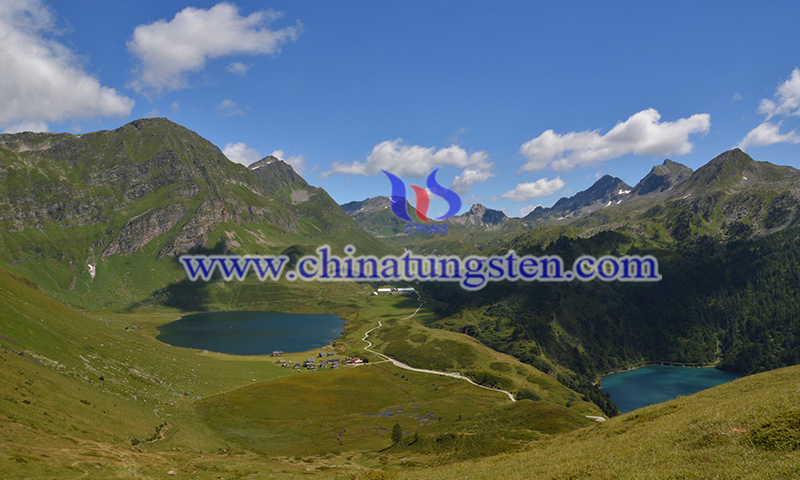Nitrogen Fixation in Low Molybdenum Ocean by Purple Sulfur Bacteria
- Details
- Category: Tungsten's News
- Published on Saturday, 09 April 2022 16:49
A team of researchers from the Max Planck Institute recently studied the organisms responsible for nitrogen fixation and the types of nitrogenase used in the anoxic, low molybdenum (Mo) chemosphere of Lake Cadagno by combining natural abundance isotope measurements with stable isotope culture, metagenomics, metatranscriptomics, and single-cell analysis.
It was shown that purple sulfur bacteria (PSB), which use conventional MoFe nitrogenase, are key nitrogen-fixing microorganisms in Cadagno Lake, despite low Mo concentrations.
Biological nitrogen fixation was key to the expansion of life on early Earth. As a major component of proteins and nucleic acids, nitrogen (N) is an essential element of life. The largest available reservoir of nitrogen is in the atmosphere, where it exists in the form of nitrogen (N2), an inert gas that is available only to specialized microorganisms.

On the early oxygen-deficient Earth, nitrous oxide and its reaction products produced by lightning were one of the first sources of significant amounts of nitrogen. Thus, the evolution of biological N2 fixation, i.e. the enzymatic catalytic reduction of N2 gas to ammonia, was key to the expansion of life on Earth.
For the oceans, cyanobacteria, which carry out oxygenic photosynthesis, are commonly thought to be the main primary producers and nitrogen fixers. In addition to cyanobacteria, it has been speculated that anaerobic photosynthesis may have contributed to both CO2 and N2 fixation. In the late Proterozoic oceans, light and sulfide provided ideal conditions for anaerobic phototrophic sulfur bacteria due to persistent anoxia and sulfide-rich continental margins. Members of both green sulfur bacteria (GSB) and purple sulfur bacteria (PSB) have the genetic potential to fix nitrogen, and their N2 fixation activity has been demonstrated in pure cultures.
The reduction of N2 is catalyzed by nitrogenase, which consists of two major subunits: diazotrophic enzyme and diazotrophic reductase. So far, three different types of nitrogenases have been identified. The molybdenum-iron nitrogenase is the most efficient and is ubiquitous in known nitrogen-fixing bodies.
Some nitrogen-fixing bodies additionally encode one or two alternative nitrogenases, namely ferrovanadium and pure iron nitrogenases. Experiments on nitrogen-fixing cyanobacterial cultures have shown that MoFe nitrogenases are not completely inhibited under low Mo conditions.
Different theories have led to much debate about the origin of nitrogenases, the organisms involved, and when and how biologically fixed nitrogen became widespread in the ancient oceans. These questions are difficult to resolve because Precambrian samples are sparse and their information content is limited to a large number of N-isotopic compositions or, in rare cases, biomarkers attributed to potential nitrogen-fixing microorganisms.

Isotopic compositions provide indications of nitrogen fixation activity and which type of nitrogenase may have been active but do not reveal the identity of the organism. Conversely, biomarkers can prove identity but cannot be used to infer the activity of potential nitrogen fixers. Therefore, for these ancient samples, it is almost impossible to link microbial identity and function using only paleontological data. However, present-day simulation systems can provide some help.
Due to similar environmental conditions, Cadagno Lake is often considered a Proterozoic (2.5–0.5 billion years ago) continental ocean margin analog system with low sulfate concentrations and Mo concentrations, at least an order of magnitude lower than modern oceanic Mo concentrations.
Low molybdenum conditions are expected to favor the use of alternative nitrogenases, while N2 fixation by cyanobacteria using conventional MoFe nitrogenases is expected to occur in oxygenated surface waters with slightly higher Mo concentrations.
| Molybdenum Supplier: Chinatungsten Online www.molybdenum.com.cn | Tel.: 86 592 5129696; Fax: 86 592 5129797;Email:sales@chinatungsten.com |
| Tungsten News & Prices, 3G Version: http://3g.chinatungsten.com | Molybdenum News & Molybdenum Price: http://news.molybdenum.com.cn |



 sales@chinatungsten.com
sales@chinatungsten.com